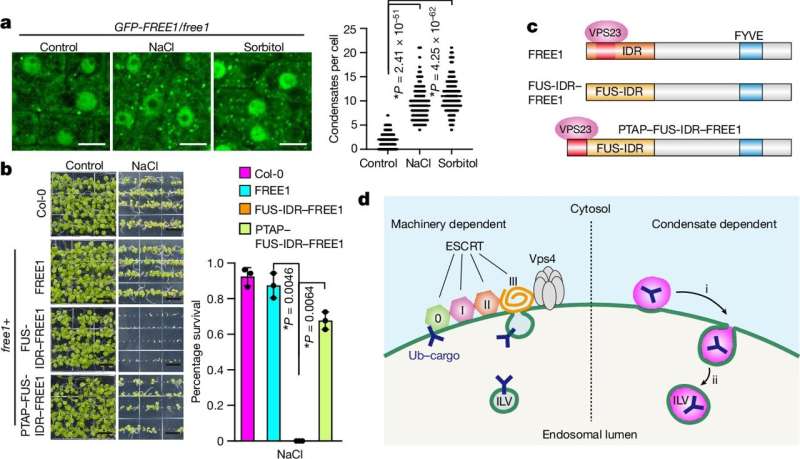Researchers have discovered that biomolecular condensates, which are small cellular droplets, can split membranes without the aid of proteins. This finding challenges the previous belief that only certain proteins were capable of this task. The study, published in Nature, could lead to new medical treatments for diseases like Alzheimer’s and cancer, as these condensates are associated with their development.

Unlocking the Secrets of Cellular Droplets
Biomolecular condensates are a relatively new discovery, having been known for only a decade. These small, liquid-like droplets within cells are distinct from classic organelles, as they do not have a membrane. Instead, they consist of various molecules and play crucial roles in stress reactions and signal transmission.
The international research team, led by Professor Sebastian Aland from the TU Bergakademie Freiberg, has now uncovered a surprising capability of these cellular droplets: the ability to split membranes without the need for specialized proteins. This finding challenges the long-held belief that only certain proteins were responsible for this cellular process.
Visualizing the Membrane-Splitting Process
To understand how the biomolecular condensates interact with cell membranes, the researchers conducted experiments with the plant species Arabidopsis thaliana. They observed that the condensates can settle on the membrane, similar to a drop of water on a pane of glass. Since cell membranes are softer than glass, the condensates and the membrane can deform each other.
Using a new simulation technique developed by Professor Aland, the researchers were able to visualize and confirm the process of membrane constriction and fission by the condensates. The simulations show that the condensates can divide membranes in a matter of seconds, solely through their surface tension and the effect of capillary forces, without the need for specialized proteins.
Implications for Biomedical Applications
The findings of this study have significant implications for biomedical research and potential treatments. Biomolecular condensates are associated with the development of diseases such as Alzheimer’s and cancer, and understanding their mechanisms of action could lead to new therapeutic approaches.
Professor Aland and his team are now working on improving the simulations and exploring the conditions under which the membrane-splitting process occurs. By gaining a deeper understanding of these cellular processes, researchers may be able to develop treatments that target the disruption of biomolecular condensates, potentially addressing the underlying causes of various diseases. This groundbreaking discovery opens up new avenues for medical advancements, further highlighting the importance of continued research in this field.
